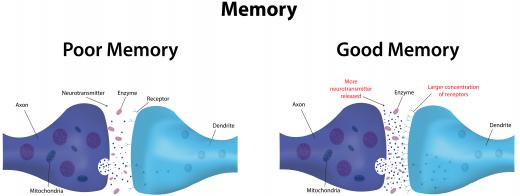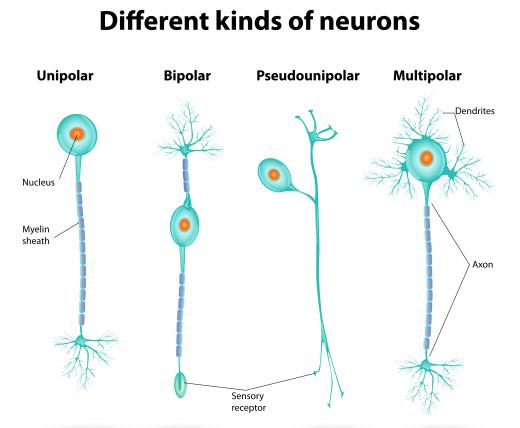What is an Acetylcholine Receptor?
An acetylcholine receptor is a transmembrane receptor protein that binds to the neurotransmitter acetylcholine, although it can also bind to other ligands with a lower affinity. It is found in different forms throughout the body’s central and peripheral nervous system, most typically in the cell membranes of neurons. It plays an important role in the autonomic nervous system. The two major types of acetylcholine receptor are nicotinic and muscarinic.
Nicotinic acetylcholine receptors are named because they respond strongly to nicotine upon binding. This type of acetylcholine receptor is a ligand-gated ion channel, with a central pore surrounded by five protein sub-units that vary depending on the receptor’s function and location in the body. It is a non-specific channel, which means different types of positively charged ions of a similar size can pass through simultaneously. When acetylcholine binds, the channel opens, allowing cations to flow freely through the pore. In cells, this usually occurs when sodium enters and potassium exits, but the calcium ions may also pass through the channel.

These channels are found in the nervous system and in the neuromuscular junctions. In typical neurons, the nicotinic acetylcholine receptor can open and depolarize the cell’s membrane potential with the movement of sodium and potassium ions. This is known as an excitatory postsynaptic potential (EPSP) that can cause a neuron to fire by creating an action potential. In the muscles, release of calcium through receptor channels can cause contraction. In this process, calcium ions reveal the binding sites between actin and myosin, allowing them to bind and contract the muscle.

A muscarinic acetylcholine receptor is named for its binding affinity for muscarine, a chemical found in mushrooms, over nicotine. These receptors differ from nicotinic acetylcholine receptors because they are G-protein-coupled receptors (GPCRs) instead of ion channels, and because they are involved in the body’s parasympathetic nervous system. They are often involved in recovery mechanisms in the neurons and in inhibitory mechanisms throughout the body.
Muscarinic receptors are found in five major forms labeled M1 through M5. Examples of the first, M1, are found in postganglionic neurons, where they mediate action-potential recovery or slow the initial membrane depolarization. The second type, M2, is found in the heart, where it lowers the heart rate and the force of atrial contraction to counteract the stimulation by the sympathetic nervous system. The third, M3, is found in smooth muscle and blood vessel walls throughout the body, and it causes slow constriction in these areas. The fourth, M4, is a general signal inhibitor found throughout the central nervous system, while the location of the fifth, M5, is unknown.
AS FEATURED ON:
AS FEATURED ON:












Discuss this Article
Post your comments